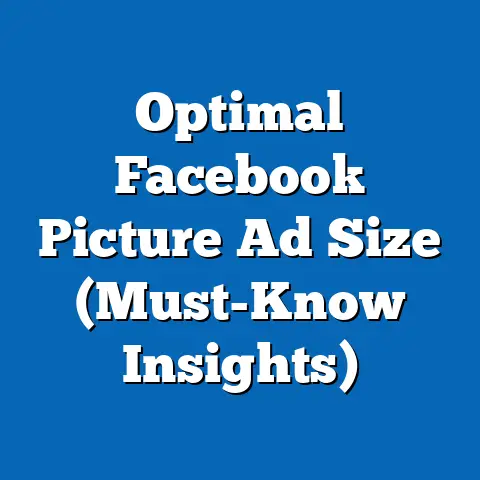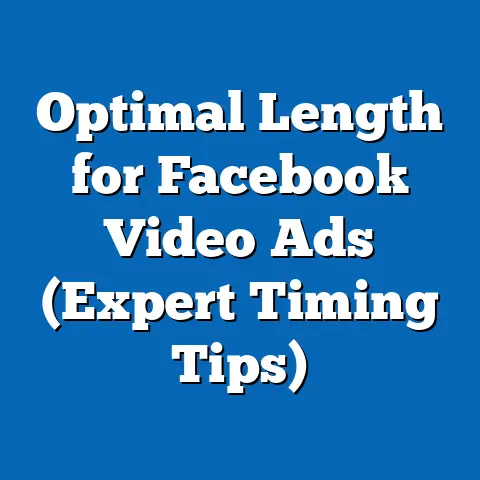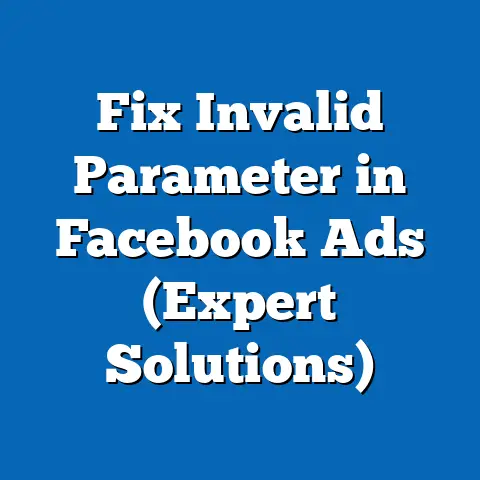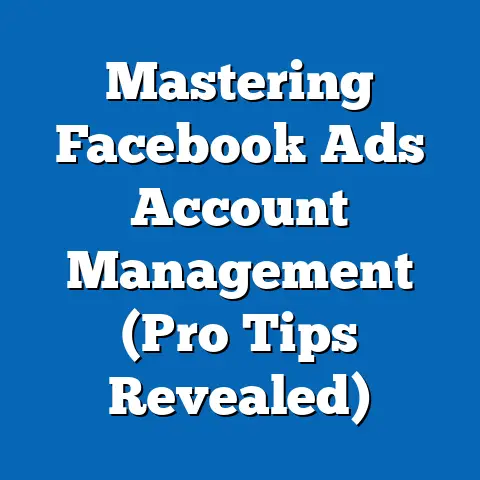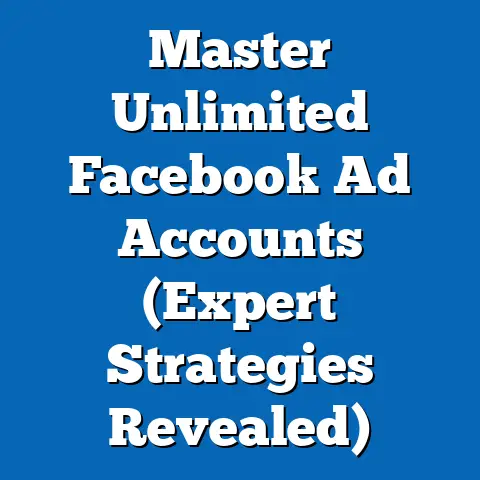Boost Facebook Ads with Effective Contact Emails (Pro Tips)
In the ever-evolving world of digital marketing, I’ve learned that the success of your Facebook ads doesn’t solely rely on eye-catching visuals and precise targeting. While those elements are crucial, the effectiveness of your contact emails is a surprisingly powerful lever you can pull to significantly enhance your campaign performance. Think of it this way: your Facebook ad is the initial handshake, but your email is the conversation that seals the deal.
This article is all about showing you how to make that conversation count. I’m going to walk you through proven strategies and pro tips that I’ve used over the years to supercharge my Facebook ad ROI with killer email marketing.
1. Understanding the Connection Between Facebook Ads and Email Marketing
I often see businesses treat Facebook ads and email marketing as separate entities. They’re not! They should be working together in harmony. Think of your Facebook ads as the bait, attracting potential customers into your ecosystem. Email marketing is the net that catches them and nurtures them into loyal clients.
Facebook ads excel at reaching a broad audience and generating initial interest. They’re fantastic for driving traffic to your website or landing page. But let’s be honest, most people aren’t going to convert on their first visit. That’s where email marketing comes in.
Email allows you to:
- Build Relationships: Unlike the fleeting nature of a Facebook ad, email allows you to develop a lasting relationship with your audience.
- Personalize Your Message: You can tailor your emails to specific segments of your audience based on their interests and behaviors.
- Drive Repeat Business: Email marketing is a fantastic way to keep your brand top-of-mind and encourage repeat purchases.
Here’s a statistic that always blows my mind: According to HubSpot, email marketing generates $42 for every $1 spent, an astounding 4200% ROI. This highlights the incredible potential of combining Facebook ads with a well-executed email strategy.
Takeaway: Don’t silo your Facebook ads and email marketing. View them as interconnected components of a larger, more effective marketing strategy.
2. The Importance of a Targeted Email List
Building a massive email list is pointless if it’s filled with people who aren’t interested in your product or service. I’ve learned this the hard way after years of experience. A targeted email list, on the other hand, is a goldmine.
A targeted list means your subscribers are genuinely interested in what you have to offer. This translates to higher open rates, click-through rates, and ultimately, conversions.
Here’s how I build and maintain effective email lists that align with my Facebook ad campaigns:
- Offer Irresistible Lead Magnets: Create valuable content, such as e-books, checklists, or webinars, that people are willing to exchange their email addresses for.
- Segment Your Audience: Don’t treat all subscribers the same. Segment your list based on demographics, interests, and behaviors. This allows you to send highly relevant and personalized emails.
- Use Facebook Lead Ads: These ads make it incredibly easy for people to sign up for your email list directly from Facebook.
- Promote Your Email List on Your Website: Make sure it’s easy for visitors to subscribe to your email list on your website.
- Regularly Clean Your List: Remove inactive subscribers to improve your email deliverability and engagement rates.
Example: Let’s say you’re selling fitness programs. You could segment your email list based on fitness goals (weight loss, muscle gain, etc.) and send targeted emails with content and offers that are relevant to each segment.
Takeaway: Focus on building a targeted email list of people who are genuinely interested in your product or service. This will significantly improve the effectiveness of your email marketing campaigns.
3. Crafting Compelling Email Content
Once you have a targeted email list, you need to create compelling email content that resonates with your audience. I’ve seen so many businesses fall flat here, sending generic, uninspired emails that end up in the trash.
Here are some elements of engaging email content that complements Facebook ads:
- Subject Lines That Grab Attention: Your subject line is the first (and sometimes only) chance you have to make an impression. Make it intriguing, relevant, and personalized.
- Personalization: Use your subscriber’s name and other personal information to make them feel valued.
- Clear Calls-to-Action (CTAs): Tell your subscribers exactly what you want them to do. Use strong, action-oriented language.
- Value-Driven Content: Provide valuable content that is relevant to your subscriber’s interests and needs.
- Consistent Branding: Maintain consistency between your ad messaging and your email content. Use the same tone, style, and branding.
Pro Tip: Write your emails like you’re talking to a friend. Be conversational, authentic, and engaging.
Example: If your Facebook ad promotes a new line of running shoes, your email could feature a blog post about the benefits of running, a video review of the shoes, and a special discount code for subscribers.
Takeaway: Craft compelling email content that is relevant, engaging, and personalized. This will keep your subscribers interested and encourage them to take action.
4. Timing Your Emails for Maximum Impact
I’ve spent countless hours analyzing email open rates and click-through rates to determine the best times to send emails. Timing is crucial. Sending an email at the wrong time is like shouting into the void.
Here are some strategies for determining the best times to send emails based on audience behavior and engagement metrics:
- Analyze Your Data: Use your email marketing platform to track open rates, click-through rates, and conversion rates. Identify patterns and trends.
- Consider Your Audience’s Time Zone: If you have subscribers in different time zones, segment your list and send emails at different times.
- Experiment with Different Times: Don’t be afraid to experiment with different send times to see what works best for your audience.
- Use A/B Testing: Test different send times to see which one generates the highest engagement rates.
Example: If your Facebook ad targets working professionals, you might want to send emails during lunchtime or after work hours.
Takeaway: Pay attention to timing. Experiment with different send times to find what works best for your audience and maximize your email engagement.
5. Utilizing A/B Testing for Email Optimization
A/B testing is a game-changer. I’ve seen it transform mediocre email campaigns into high-performing ones. It’s all about testing different versions of your emails to see which one performs better.
Here’s how to conduct A/B tests on various elements of your emails:
- Subject Lines: Test different subject lines to see which one generates the highest open rates.
- Email Layouts: Test different email layouts to see which one is most engaging and easy to read.
- CTAs: Test different CTAs to see which one generates the most clicks.
- Images: Test different images to see which one is most visually appealing and relevant.
- Send Times: Test different send times to see which one generates the highest engagement rates.
Example: You could A/B test two different subject lines for the same email. One subject line could be “Limited-Time Offer: 20% Off,” while the other could be “Exclusive Discount for Subscribers Only.”
Takeaway: Embrace A/B testing. It’s a powerful tool for optimizing your email content and improving your overall email marketing performance.
6. Integrating Email Capture with Facebook Ads
Integrating email capture directly into your Facebook ads is a brilliant strategy that I highly recommend. It streamlines the process of building your email list and makes it easier for people to subscribe.
Here are some strategies for capturing email addresses directly from Facebook ads:
- Use Facebook Lead Ads: These ads allow people to sign up for your email list directly from Facebook without having to leave the platform.
- Create Landing Pages: Design dedicated landing pages that are optimized for email capture.
- Offer a Lead Magnet: Provide a valuable incentive for people to sign up for your email list, such as a free e-book or a discount code.
- Use a Clear Call-to-Action: Tell people exactly what you want them to do, such as “Sign up for our newsletter” or “Download our free e-book.”
Actionable Tips for Designing High-Converting Landing Pages:
- Keep it Simple: Don’t overwhelm visitors with too much information.
- Use a Clear Headline: Clearly communicate the value proposition of your offer.
- Use High-Quality Images: Use visually appealing images that are relevant to your offer.
- Make it Mobile-Friendly: Ensure your landing page is optimized for mobile devices.
- Test Different Elements: A/B test different elements of your landing page to see what works best.
Takeaway: Integrate email capture directly into your Facebook ads to streamline the process of building your email list and maximize your lead generation efforts.
7. Analyzing and Measuring Success
You can’t improve what you don’t measure. I’ve learned this lesson over and over again. Tracking and analyzing your email performance metrics is essential for optimizing your email marketing campaigns and improving your Facebook ad ROI.
Here are some key performance indicators (KPIs) to monitor:
- Open Rate: The percentage of subscribers who opened your email.
- Click-Through Rate (CTR): The percentage of subscribers who clicked on a link in your email.
- Conversion Rate: The percentage of subscribers who completed a desired action, such as making a purchase.
- Unsubscribe Rate: The percentage of subscribers who unsubscribed from your email list.
- Bounce Rate: The percentage of emails that could not be delivered.
Pro Tip: Use analytics tools, such as Google Analytics and your email marketing platform’s analytics, to track your email performance metrics and identify areas for improvement.
Example: If you notice that your open rates are low, you might want to experiment with different subject lines. If you notice that your click-through rates are low, you might want to improve the relevance and quality of your email content.
Takeaway: Track and analyze your email performance metrics to identify areas for improvement and optimize your email marketing campaigns.
Conclusion
Effective contact emails are not just an ancillary part of Facebook advertising; they are a core component that can significantly enhance overall campaign performance. By implementing the pro tips I’ve shared throughout this article, you can see measurable improvements in your ad ROI.
Remember, your Facebook ad is just the first step. It’s your email marketing that nurtures your leads, builds relationships, and drives conversions.
Call to Action
Want to dive deeper into maximizing your Facebook advertising strategies through effective email marketing? Subscribe to my newsletter for more insights, tips, and tricks!

